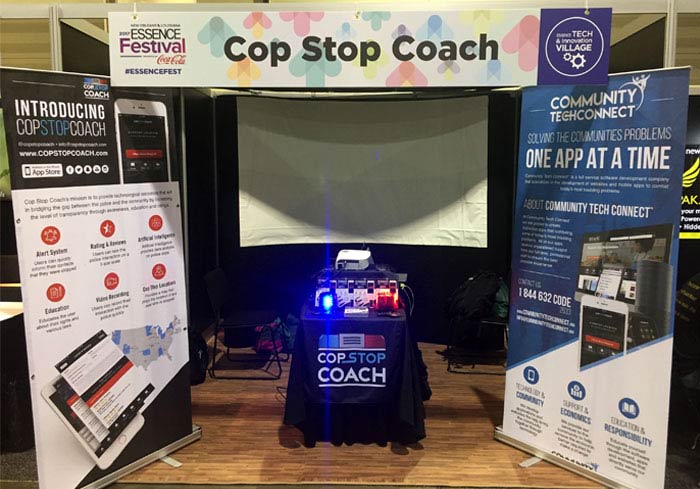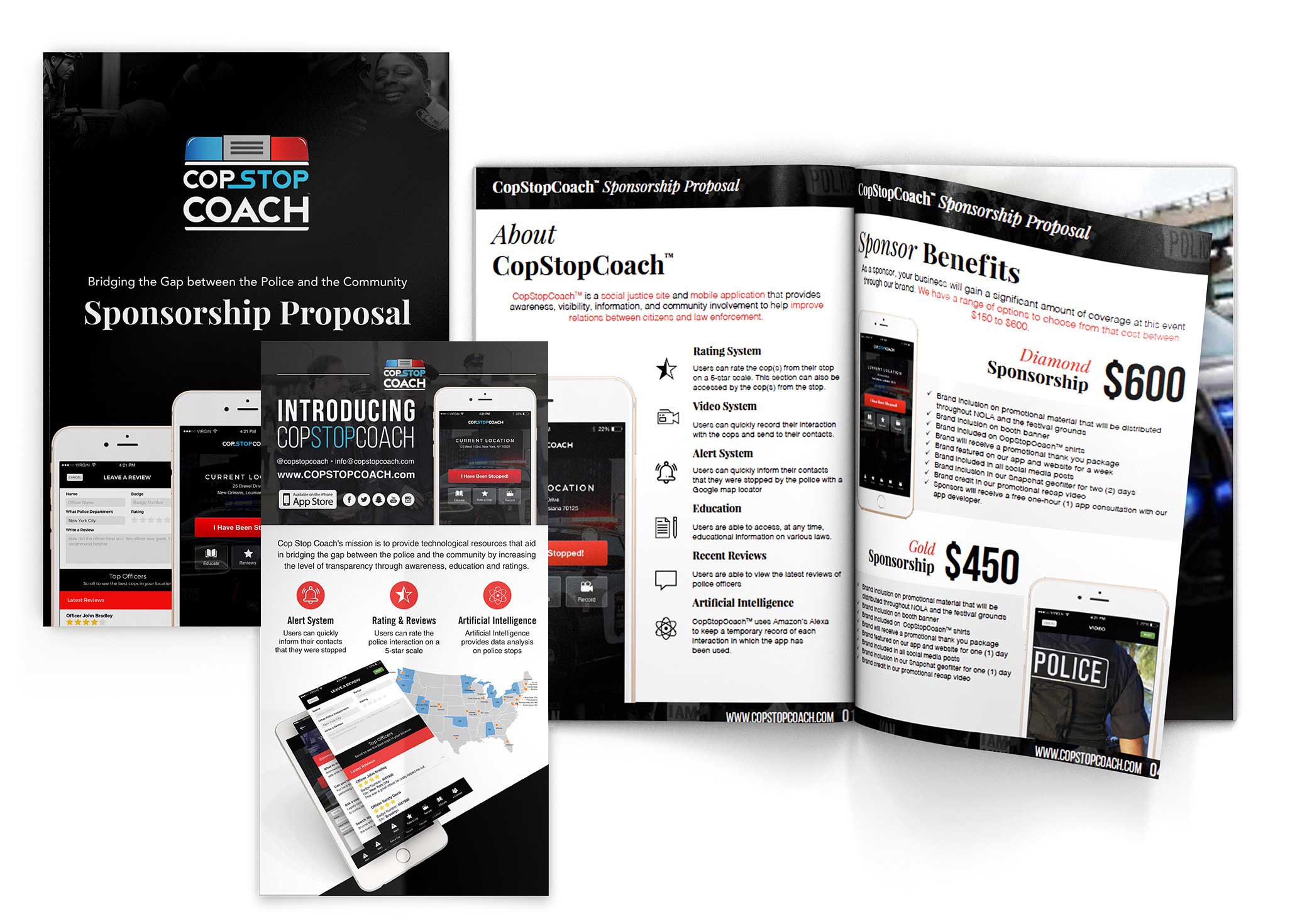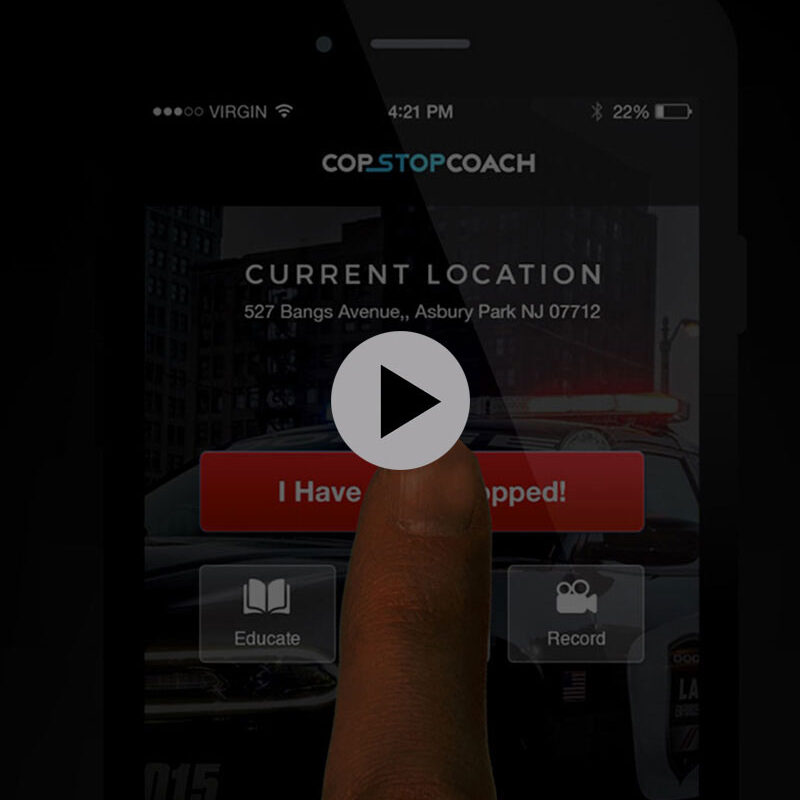Case Studies
Cop Stop Coach is a social justice company and mobile application that provides awareness, visibility, information, and community involvement to help improve relations between citizens and law enforcement.
The app was created to give citizens, who have been detained by the police, a quick way to inform others of their stop, record the situation, and review the officer.
Cop Stop Coach makes it very easy and foolproof for someone to use. When a law enforcement officer stops a person, they can open the app and, by clicking one button, send a preset text message to their designated list of people informing them where and when they have been stopped. The person can begin recording their interaction with the cop and directly upload it to the database. The person can review their full stop and rate the officer when their situation has subsided.
Company:
Cop Stop Coach
Services:
Lead UI/UX Design, Graphic Design, Video, Front-end Development, Art Direction
Team:
1 designer, 2 developers, 2 marketers, 1 software engineer, 1 SME
Locations:
Asbury Park, New Jersey | Miami, Florida | New Orleans, Louisiana

Problem
Situation: Police play an important role in our community but like many aspects of our current criminal justice system, the role of law enforcement has been overemphasized, overfunded, and outsized to proportions that no longer serve the goal of community safety and security.
Conceptualization and Ideation
We used an agile iterative approach with collaboration when creating a solution for Cop Stop Coach.
Task: The first part of our research was understanding how people interacted with police engagement. For this, we conducted interviews and question-and-answer seminars with the public. This allowed us to understand their biggest frustrations and identify the pain points they encounter daily. After getting the research from the client’s target market, I started creating prototypes and design concepts. After having a go-ahead from the team on the mockups, we began to conduct usability tests with the low-fidelity designs. Once we had confidence in the deliverables, we started finalizing designs.
A continuous approach for execution
Over the course of the year, we ran multiple small iterations followed by an extensive refactoring iteration in Q3. Here’s how that looked when laid out in the timeline. Following the iteration timeline, a JIRA epic and Kanban board were created. Relevant Slack channels and InVision projects were opened. A Box folder was established for versioning (and assets, if a Design System update was to be made). Finally, a retrospective case study was formed in preparation for internal and external post-mortem documentation..
Agile and Design Thinking Framework
Iterations were based off weekly sprints, where we had daily stand ups with the team and scrum master. We tracked our daily metrics and details on backlog items and their respective acceptance criteria during, the cupcake, cake to wedding cake, until we got to the minimum viable product. For the duration of the project we monitored our progress and version control through a pull method using GIT, Jira, Zoho Sprints, KanBan Flow and Bit Bucket. Below is the process we used that helped us get to the MVP:

Interations and Protyping
Initially, I explored different ways a user could alert their contacts when the police stopped them. Next, we explored various layouts that would be valuable for users when navigating the mobile application. These included entry points to alert users when the police, video recording, artificial intelligence bots, education, and rating review services stopped them. As part of my process, I detailed out every single flow and weighed the pros and cons of each.
Although the most intuitive prototype was the artificial intelligence bot itself, this was technically not feasible in our period. So I created a different layout that included the alert, video, rating, and education services. Throughout the project, requirements changed, and new constraints were uncovered. For example, early on, we developed the mobile application in Xamarin with back-end development in ASP.net, but this was not feasible as we continued to create the application. Ultimately, I decided to develop the mobile application in React Native with back-end development in ASP.net. Overall, we got to the MVP and Final versions based on constraints and multiple iteration phases.

Solution
After taking time to design the prototypes and agree on the direction with the team it was time to begin production.
Action: Working with the team, we ran design thinking sessions to explore potential ways to improve the final product. First, we theorized about the deliverables we would create for Cop Stop Coach. Then I began to sketch ways to make it more obvious. Branding design, including video, stationary, logos and pamphlets, were created using illustrator, InDesign, Photoshop, Premier and After Effects. UI/UX designs for the project were completed in Sketch and Invison. The entire project was developed in ReactJS and Native followed by back-end development in ASP.Net. The MYSQL database including JSON data and API’s were stored in Microsoft Azure. Version control, including managing the GIT, project sprints and API testing were completed in Bitbucket/SourceTree, Postman and Zoho Sprints. Ultimately, 4 deliverables were generated from the group design session which included a video, website, mobile application, and pamphlet.



Seeing Results
In the end, we incorporated all our ideas into our final deliverables and despite it being a painstaking effort, we saw it pay strong dividends with each iteration
Results: We made design and development decisions when completing the Cop Stop Coach project with the aim of solving the policing problem in the community. As a result of the valiant effort we put forward in completing the application, we were able to showcase it throughout the United States at various events such as the South Florida New Business Expo, Essence Fest in New Orleans, and a variety of different police campaigns in different cities. Below is a few of the overall metrics we achieved from this engagement
